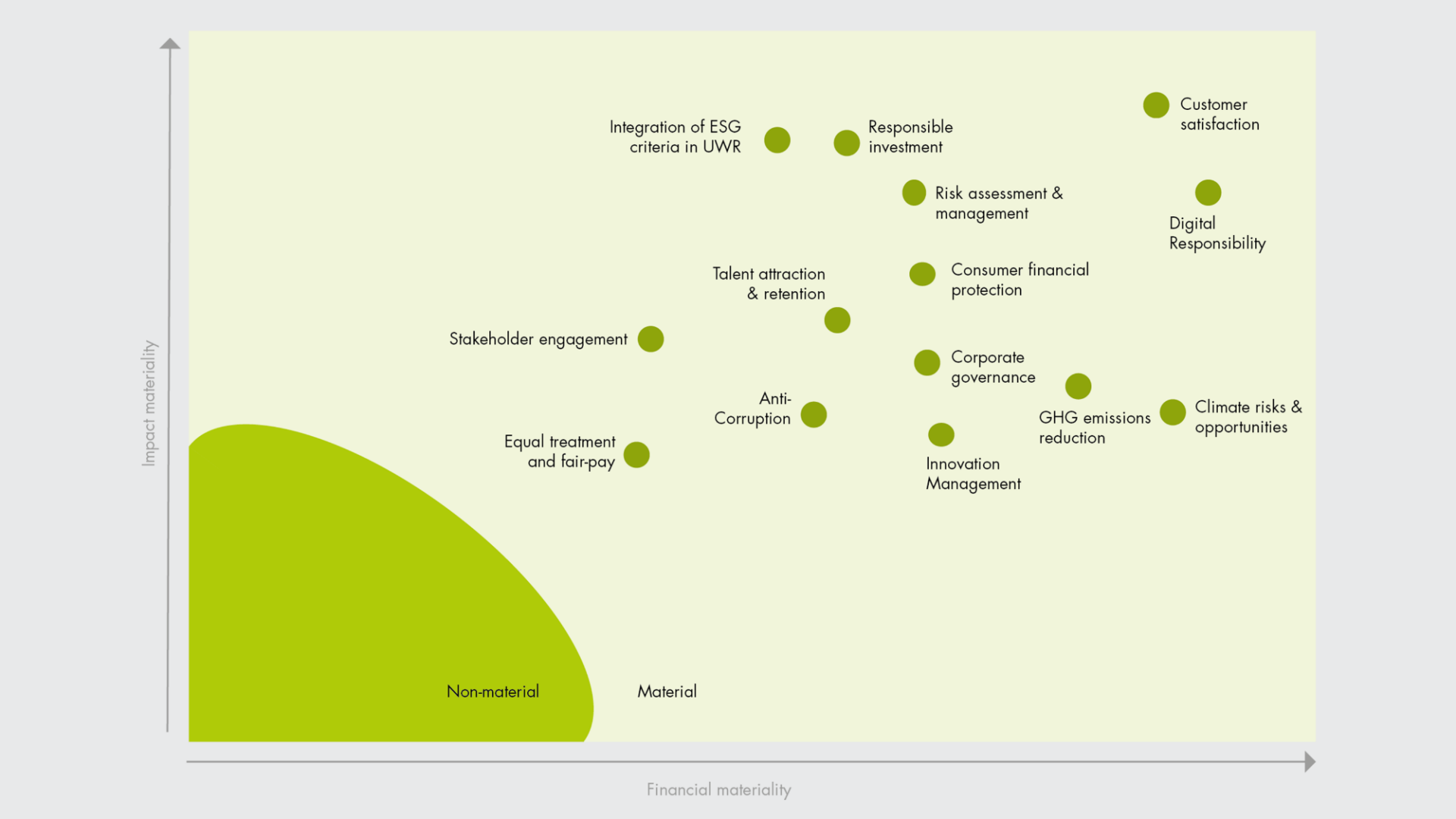
Sustainability strategy
As part of our sustainability strategy, we aim to contribute toward combating climate change and avoiding or at least mitigating potential negative sustainability impacts. We aim to make our business more sustainable in general and to make greater use of the opportunities for even more sustainable corporate development.
To meet these objectives, we need to address a number of different aspects: climate change and the environment, sustainability risks, the changing needs of our customers and the well-being and needs of our employees.
Our four sustainability focal points
In a rapidly changing environment, we also need to dynamically develop our sustainability strategy. In 2020, the Executive Management and the Board of Directors defined the 20.25 sustainability strategy. To respond to changing demands and increasing regulation, the Executive Management and the Board of Directors refined the strategy, with a particular focus on its concrete implementation. The aim was to define a compact implementation framework for the sustainability strategy and to set clear focus areas while at the same time incorporating the principles and ambitions set out in the strategy. Since 2022, we have structured the strategy into four sustainability pillars and are coordinating its implementation within these focus areas:
Climate strategy
Based on our sustainability strategy 20.25, we have specified our goals in terms of mitigating climate change in a climate strategy. This includes targets and measures for dealing with the financial impact of the risks and opportunities associated with climate change on our business activities (financial materiality) as well as those for dealing with the impact that our business activities have on the climate (impact materiality). In order to take both the financial and the impact perspective into account, we divide the objectives and measures of the climate strategy into three pillars:
Materiality analysis
We are committed to those areas where our business activities have the greatest impact on the environment and society and where we can make a positive contribution. In order to identify the most relevant topics and the greatest levers, we have been carrying out materiality analyses for the entire Group systematically and at regular intervals since 2013. This enables us to better understand the needs of our stakeholders and identify opportunities and risks regarding sustainability.
For the 2023 materiality analysis, we primarily involved internal stakeholders from the various market units and business functions of the Group, including managers, sustainability experts from various business units, the CEO and CFO. Through stakeholder input and analyses, we consider impacts, risks and opportunities in order to achieve relevant results not only at Group level, but also at local level.
Our materiality assessment takes into account how the relevance of the topics may develop over time. Based on stakeholder surveys and scenario analyses, we expect topics such as the integration of ESG factors in underwriting, responsible investment, greenhouse gas reduction, talent management and innovation management to become more important (see also the illustration of the materiality assessment results below). In order to monitor the development of the relevance of the material topics, We have established a process for the annual update of the materiality assessment.

